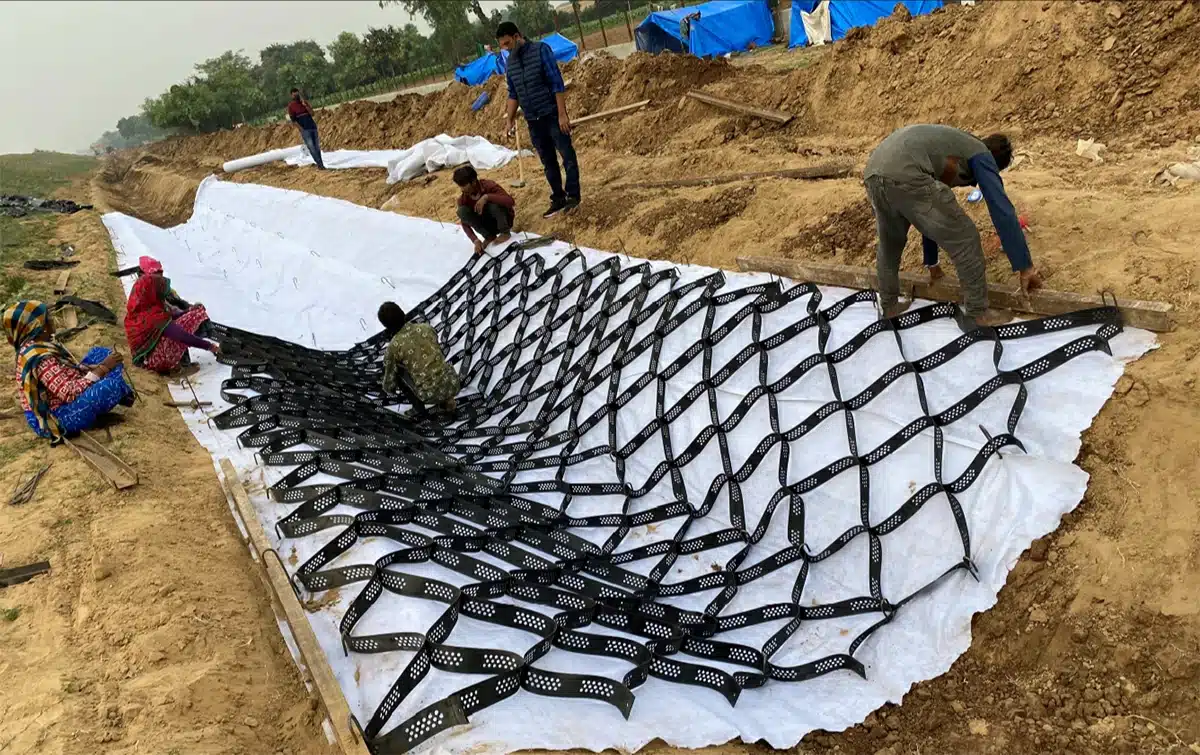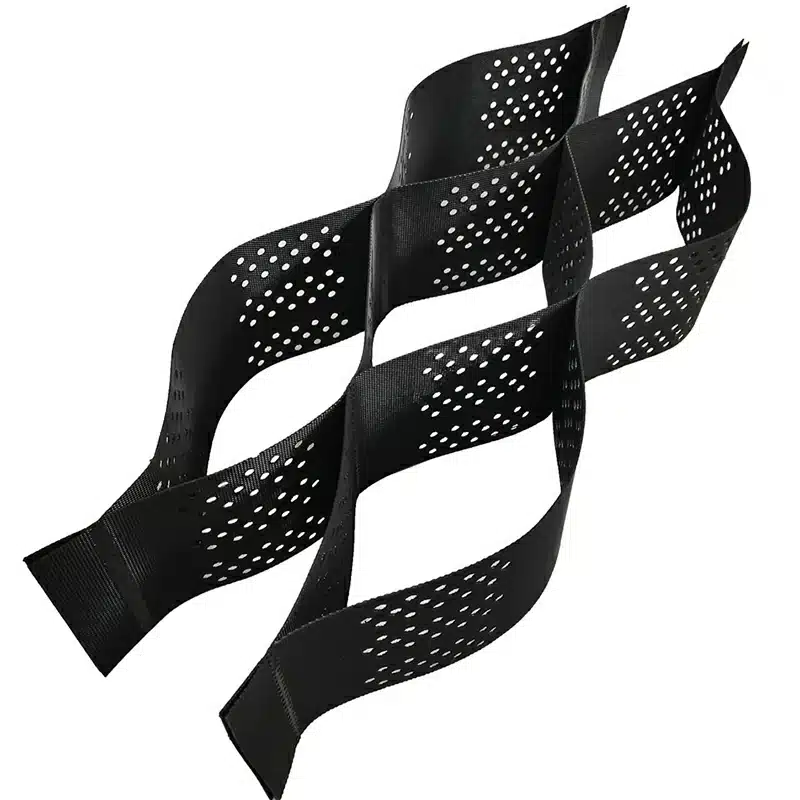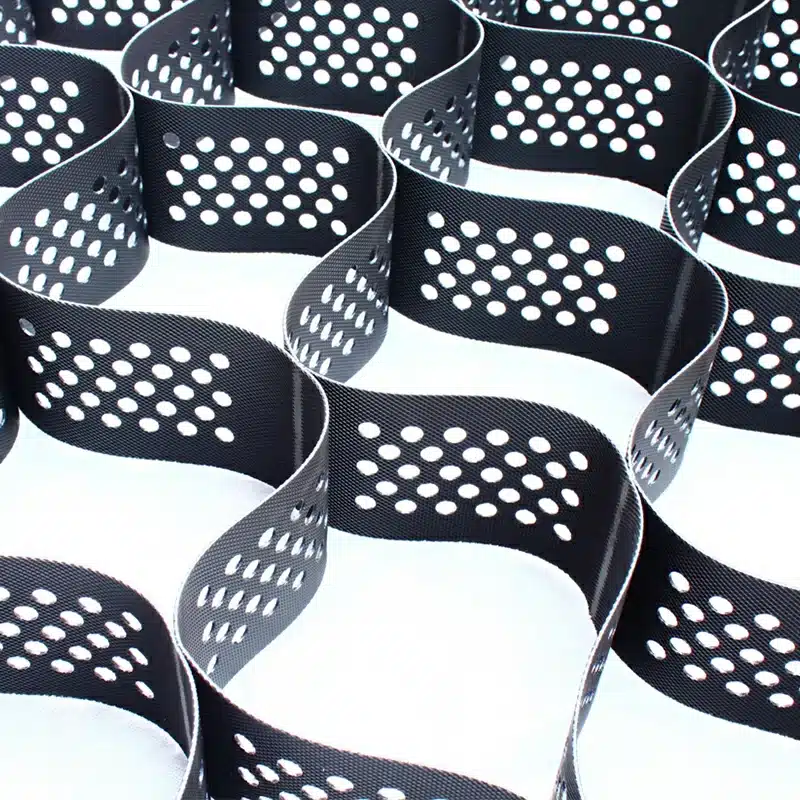+86-159 9860 6917
info@geofantex.com
geofantex@gmail.com
+86-400-8266163-44899
Geocells are an innovative technology widely used in civil engineering to stabilize slopes and prevent soil erosion. This popular science article explores how geocells work, their applications on slopes, and the benefits they offer. By creating a cellular confinement system, geocells provide structural stability to various soil types, making them an essential component in sustainable construction and landscaping projects.
What are Geocells?
Geocells are three-dimensional honeycomb-like structures made from high-density polyethylene (HDPE) or other polymeric alloys. These cells are interconnected and expandable, typically used to stabilize and reinforce soil. When filled with soil, aggregate, or concrete, geocells form a rigid and flexible structure that distributes weight evenly and prevents soil movement, thus reducing erosion and enhancing load-bearing capacity.

How are Geocells Used on Slopes?
On slopes, geocells are deployed to prevent landslides and soil erosion caused by water run-off and gravitational pull. The cellular confinement system effectively traps soil and vegetation within its cells, promoting root growth and water filtration. This setup not only stabilizes the slope but also encourages natural vegetation, integrating seamlessly with environmental restoration efforts.
What are the Key Benefits of Using Geocells for Slope Stabilization?
The use of geocells on slopes offers several key benefits:
- Erosion Control: Geocells provide excellent erosion control by confining soil and reducing runoff.
- Enhanced Load Distribution: The cellular structure distributes loads evenly, preventing soil deformation and improving stability.
- Flexibility: Geocells adapt to changes in terrain and temperature without losing integrity.
- Cost-effectiveness: They reduce the need for traditional construction materials like concrete and large stone aggregates.
- Environmentally Friendly: Geocells are often made from recycled materials and promote vegetation growth, contributing to ecological balance.
Are There Any Limitations to Using Geocells?
While geocells are highly effective for slope stabilization, they do have some limitations. The performance depends significantly on the quality of installation and the material used to fill the cells. Inadequate installation or improper filling can lead to reduced effectiveness. Moreover, in extremely steep slopes or in areas with very loose soil, additional reinforcement or different solutions might be required to ensure stability.
Geocells are a versatile and robust solution for slope stabilization and erosion control. Their unique cellular design allows for effective soil confinement, improved load distribution, and enhanced environmental integration. While they may have some limitations, their benefits in promoting stability and sustainability in construction make them a valuable tool in modern engineering. This technology not only supports infrastructural development but also fosters ecological preservation, making it a win-win for both development projects and natural landscapes.



Get Free Sample
We’ll respond as soon as possible(within 12 hours)






















